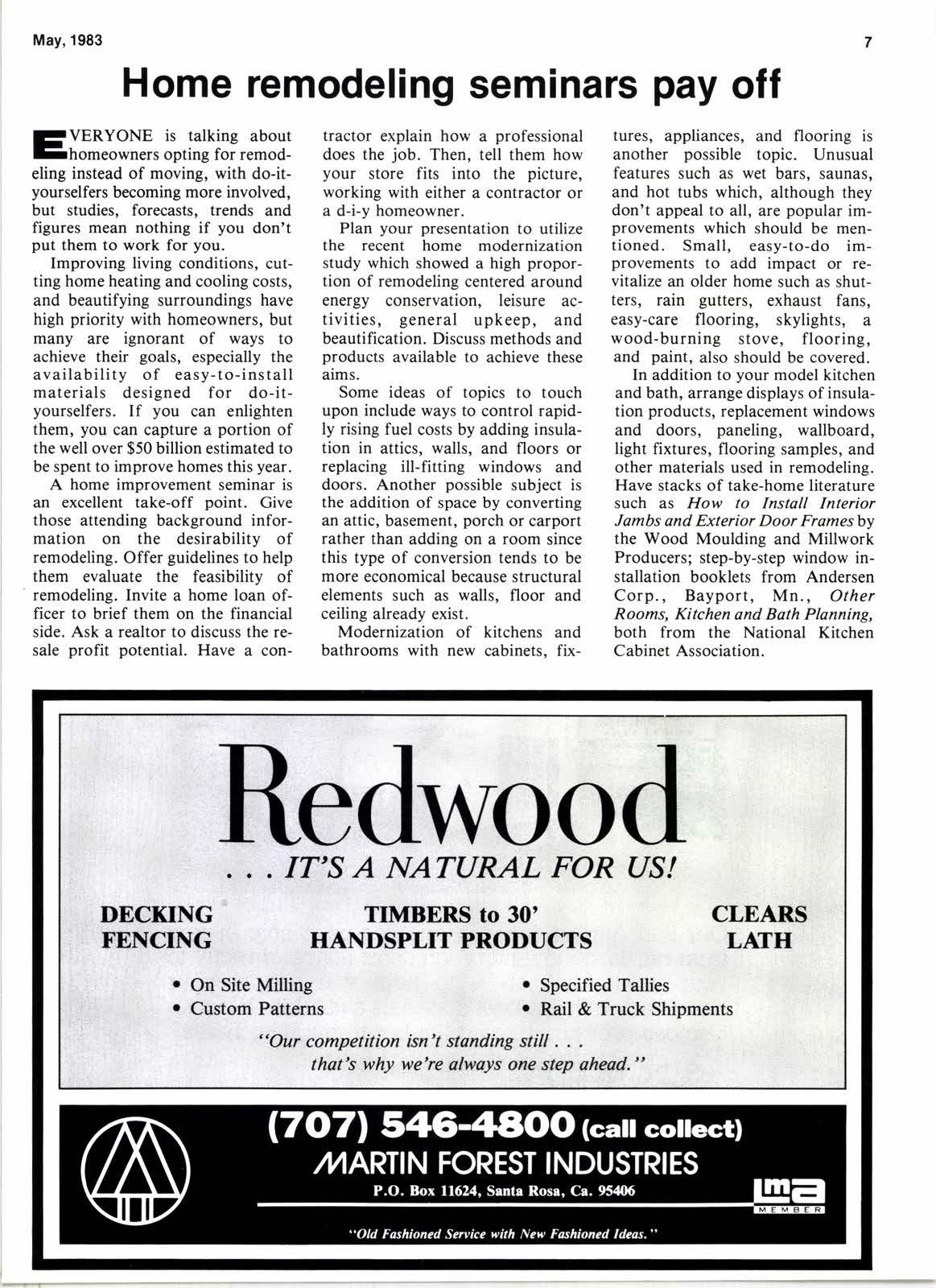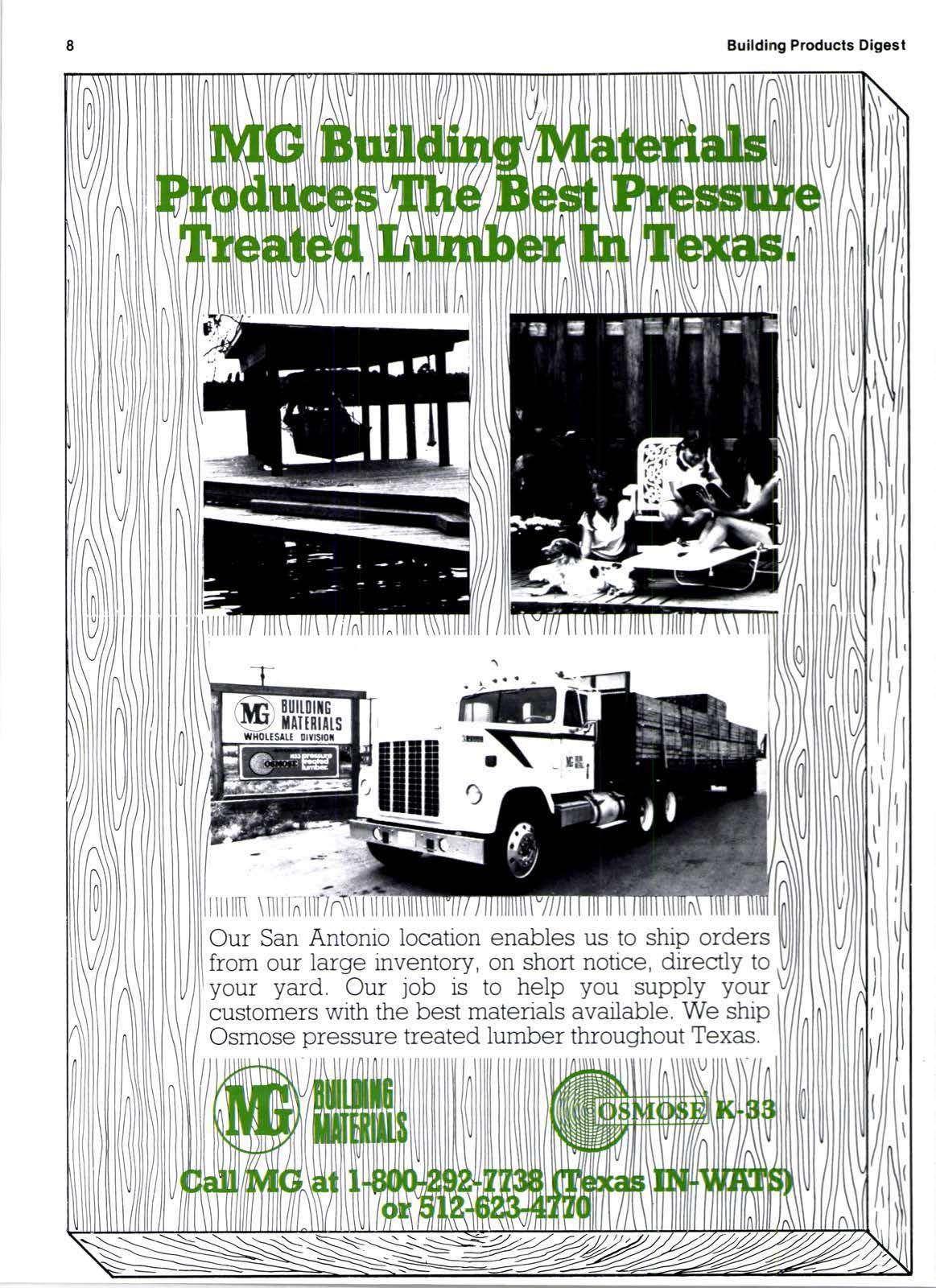
2 minute read
Home remodeling seminars pay off
ETVERYONE is talking about Ehomeowners opting for remodeling instead of moving, with do-ityourselfers becoming more involved, but studies, forecasts, trends and figures mean nothing if you don't put them to work for you.
Improving living conditions, cutting home heating and cooling costs, and beautifying surroundings have high priority with homeowners, but many are ignorant of ways to achieve their goals, especially the availability of easy-to-install materials designed for do-ityourselfers. If you can enlighten them, you can capture a portion of the well over $50 billion estimated to be spent to improve homes this year.
A home improvement seminar is an excellent take-off point. Give those attending background information on the desirability of remodeling. Offer guidelines to help them evaluate the feasibility of remodeling. Invite a home loan officer to brief them on the financial side. Ask a realtor to discuss the resale profit potential. Have a con- tractor explain how a professional does the job. Then, tell them how your store fits into the picture, working with either a contractor or a d-i-y homeowner.
Plan your presentation to utilize the recent home modernization study which showed a high proportion of remodeling centered around energy conservation, leisure activities, general upkeep, and beautification. Discuss methods and products available to achieve these aims.
Some ideas of topics to touch upon include ways to control rapidly rising fuel costs by adding insulation in attics, walls, and floors or replacing ill-fitting windows and doors. Another possible subject is the addition of space by converting an attic, basement, porch or carport rather than adding on a room since this type of conversion tends to be more economical because structural elements such as walls, floor and ceiling already exist.
Modernization of kitchens and bathrooms with new cabinets. fix- tures, appliances, and flooring is another possible topic. Unusual features such as wet bars, saunas, and hot tubs which, although they don't appeal to all, are popular improvements which should be mentioned. Small, easy-to-do improvements to add impact or revitalize an older home such as shutters, rain gutters, exhaust fans, easy-care flooring, skylights, a wood-burning stove, flooring, and paint, also should be covered.
In addition to your model kitchen and bath, arrange displays of insulation products, replacement windows and doors, paneling, wallboard, light fixtures, flooring samples, and other materials used in remodeling. Have stacks of take-home literature such as How to Install Interior Jambs and Exterior Door Fromesby the Wood Moulding and Millwork Producers; step-by-step window installation booklets from Andersen Corp., Bayport, Mn. , Other Rooms, Kitchen and Bath Planning, both from the National Kitchen Cabinet Association.

I AST YEAR homeowners spent han estimated $51.9 billion on the upkeep and improvement of residential properties. About $33.7 billion of this amount was devoted to additions, alterations or major replacements, the remainder was spent to retrofit and repair tired, worn out houses.
Studies show that a large number of homeowners are doing their own work. The biggest motivation to doit-yourself is reported to be avoiding paying a contractor, but about half of the d-i-yers interviewed claim they can do the job better than a contractor. A surprising 49v/o say that they simply "enjoy doing jobs around the house," although they admit that saving dollars increases this enjoyment. While some homeowners move from project to project with enthusiasm, many are inspired only by the necessity of having to replace old equipment or fixtures.
Homes are considered a major financial asset today. In addition, people are staying put longer. These two factors contribute to the increasing expenditures for repairs and. maintenance. Demographics show that the biggest spenders are (1) those who live in homes 4O years or older; (2) those living in their present home for five years or less; (3) those with incomes over $50,000 and (4) those with households of three persons or more.










